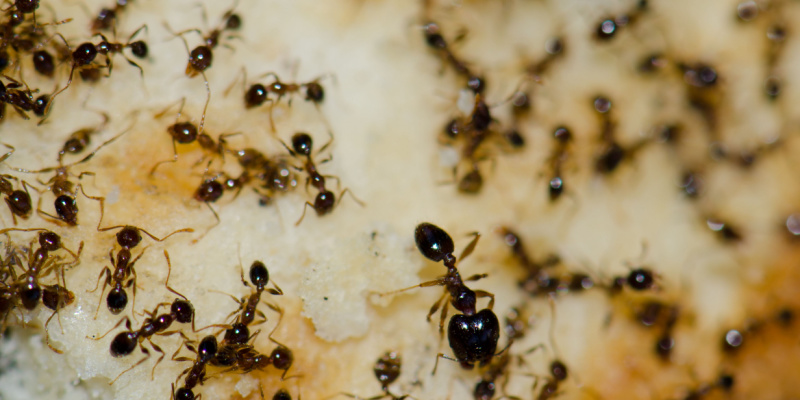In the realm of pest invasions, the unassuming Argentine ant (Linepithema humile) has risen to become a formidable adversary for homeowners and ecologists alike. Native to South America, these tiny terrors have spread their dominion across the globe, thriving in a variety of climates and causing havoc for both human inhabitants and local ecosystems. As the demand for sustainable and environmentally friendly pest control solutions continues to rise, it’s essential to understand the threat posed by Argentine ants and how green pest control methods can effectively curb their infestations.

The Argentine Ant’s Global Conquest
The Argentine ant’s success as an invasive species can be attributed to its unique social structure and impressive adaptability. Unlike many other ant species that engage in territorial battles, Argentine ants exhibit a remarkable level of cooperation. They form vast supercolonies, allowing them to collaborate across vast distances, share resources, and even intermingle with ants from different nests without displaying aggression. This extraordinary behavior has facilitated their global conquest, making them one of the most successful invasive ant species in the world.

Ecological Impact
The proliferation of Argentine ants has led to significant ecological imbalances in their invaded territories. Their aggressive nature often results in the displacement of native ant species, disrupting local ecosystems and potentially driving other insect populations to decline. In addition, these ants have a fondness for honeydew-producing insects like aphids and scale insects, which they protect in exchange for the sweet substance these insects excrete. This creates a detrimental cycle where Argentine ants defend and encourage the proliferation of these harmful pests, exacerbating the damage to plants and further destabilizing ecosystems.
Threats to Homes and Health
Argentine ants aren’t content with simply dominating the outdoors. They are skilled infiltrators, frequently infiltrating homes in search of food and water sources. Their tiny size enables them to exploit even the tiniest cracks and crevices in building structures, making them a nuisance to homeowners. These ants can contaminate food supplies and, in some cases, inflict painful bites on humans when they feel threatened
Challenges of Conventional Pest Control
Traditional pest control methods often involve the liberal use of chemical pesticides. However, these methods have significant drawbacks, including harmful effects on non- target species, the environment, and human health. Many conventional pesticides used to combat Argentine ant infestations are broad-spectrum, meaning they can harm beneficial insects, birds, and even pets. Moreover, the overuse of chemical pesticides can lead to pesticide resistance in the target species, rendering them ineffective over time.
Embracing Green Pest Control
In the battle against Argentine ants and other invasive pests, green pest control offers a sustainable and eco-friendly alternative. This approach focuses on assessment based pest management (APM) principles that prioritize long-term solutions and minimize the use of harmful chemicals. Here are some strategies employed in green pest control for managing Argentine ant infestations:

Biological Control: Introducing natural predators like lady bugs to control aphid & scale which produce honeydew that is an Argentine ant’s number one food. This can help keep their populations in check without causing harm to the environment.

Baiting Systems: Instead of using broad- spectrum pesticides, green pest control companies often employ targeted baiting systems. These baits are designed to attract ants, allowing them to carry the toxic substance back to their nests and effectively eliminate the entire colony.
Habitat Modification: Green pest control focuses on identifying the environmental factors that attract Argentine ants to a specific area. By eliminating food and water sources and sealing off entry points, homeowners can discourage ant infestations.
Beneficial Plants: Landscaping with native plants that naturally repel Argentine ants can be an effective strategy. Certain herbs, flowers, and shrubs emit scents that deter these ants from entering the area.
The Argentine ant’s global conquest is a testament to their adaptability and resilience as an invasive species. However, their dominance is not invincible. Through the application of green pest control strategies that emphasize sustainable and environmentally friendly methods, we can regain control over our homes and ecosystems. By embracing integrated pest management, biological control, and targeted baiting systems, we can effectively manage Argentine ant infestations without causing harm to non-target species or the environment. As we strive for harmonious coexistence with nature, it’s essential to remember that even the tiniest creatures play a crucial role in maintaining the delicate balance of our planet’s ecosystems.
